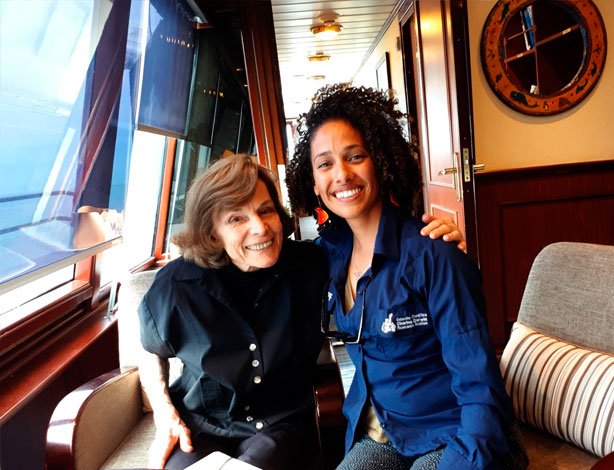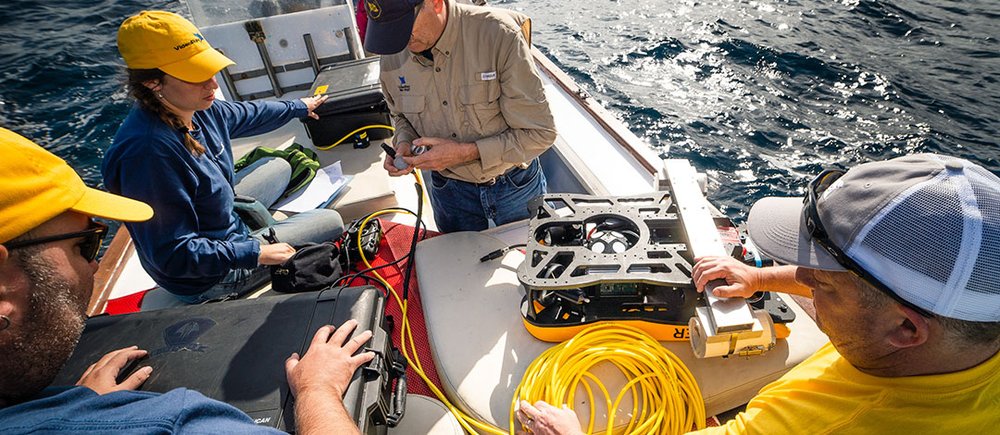
November 2018 has been one of the most exciting and challenging months I have experienced working as a marine scientist at the Charles Darwin Foundation. The month was filled with a lot of firsts, for me – I lead ocean-going research expeditions in the Galapagos, piloted remotely operated vehicles (ROVs), became a National Geographic Explorer, got to study uncharted seamounts, and met Her Deepness Sylvia Earle. Rewind to April 2018, when I submitted a proposal for an Early Career Grant with the National Geographic Early Career Grant Society to explore shallow seamounts in the Galapagos using ROVs, as they can be operated at depths below the limit for safe SCUBA diving.
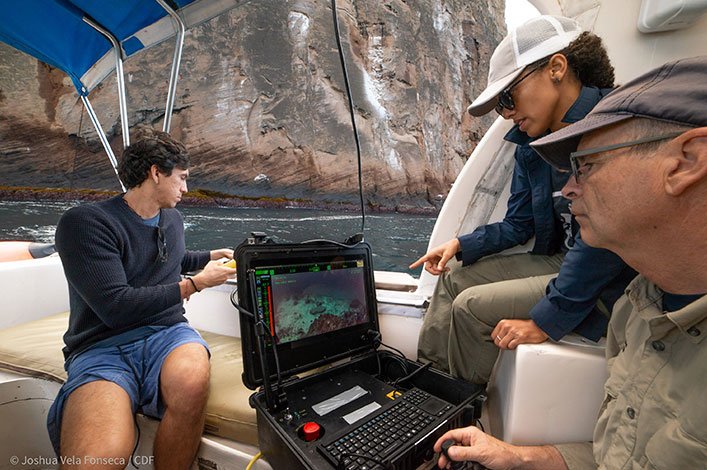
What are seamounts and why study them in Galapagos?
Seamounts are underwater mountains of all shapes and forms that rise hundreds to thousands of meters from the seabed. Many are known to be hotspots of marine diversity, often colonized by deep-sea reefs, and surrounded by nutrient-rich waters teeming with fish. On top of the Galapagos geologic platform, on which most of the major islands stand, sit hundreds of shallow seamounts, locally known as “Bajos”. These can range in heights of 100-600 meters, and many are key fishing sites for the local artisanal fishing community. A special characteristic of shallow seamounts is that they often reach the sunlight (euphotic) zone of the ocean, meaning that they potentially support a diverse range of marine habitats and communities. Yet very little is known about these ecosystems, and the aim of my pilot study is to characterize the habitats and critters along different depth gradients.
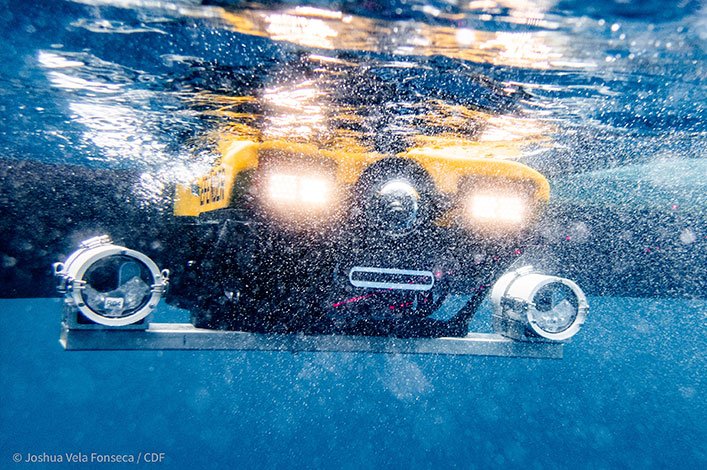
To my surprise, I was awarded the grant four months after submitting! Since then it’s been non-stop action: planning, hiring, getting permits, chartering speedboats and learning about ROV methodologies for surveying seamounts. A key component of the project was VideoRay, a specialist manufacturer of cutting-edge commercial ROVs. They generously offered to supply not only their latest high-tech equipment but also a team of techies at no cost! Additionally, I was also extremely fortunate to collaborate with Dr. Euan Harvey, who heads Ecological Fish Lab at Curtin University, Australia, and who lent me a newly designed stereo-video system for ROV-based, video transect surveying.

The field work kicked off in the first week of November with the arrival of the VideoRay team and their ROVs. After lots of gear testing and figuring out the best way to operate the ROVs from small speedboats, we completed five off-shore field trips to survey three seamounts in the central region of the archipelago. A Defender ROV and a Pro5 ROV were remotely piloted to carry out video transects along various depth ranges between 30 to 180 m, the maximum operating depth of the stereo-video system.
So what was down there?
Each seamount was unique, featuring heterogeneous habitats along the slopes. Nevertheless, as expected in many of the shallow zones, we found soft coral gardens with a great abundance of fish, and the size and density of life declined as we went deeper. Although many areas in deeper zones (70-180 m below the surface) on seamounts initially appeared to be barren, closer surveys revealed lots of interesting fish and invertebrate species. One of our highlights was finding several beautiful deep-sea sponge reefs (at depths of 150-180 m) that were home to many invertebrates and fish species.
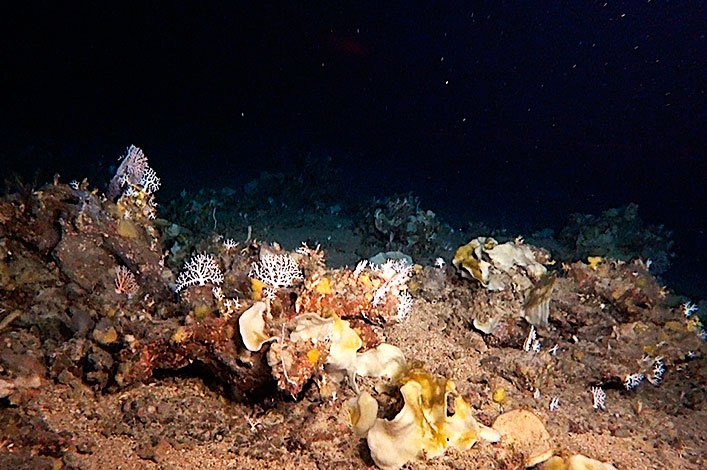
However, we were totally blown out of the water on our last field day when we discovered that the summit of one of the seamounts was covered by a field of large macro-algae, that we suspect is a kelp forest. I could not believe what my eyes were seeing on the monitor of the ROV below. We saw hundreds of over 1-m tall kelp stalks waving to us in the swell! It was a eureka moment for the entire team. Aware that this is possibly a ground-breaking finding, we embarked on one final mission with the goal of taking kelp samples with the robotic arm the VideoRay team installed on the ROV. We are indebted to the Galapagos National Park Directorate for giving us a sampling permit at very short notice.
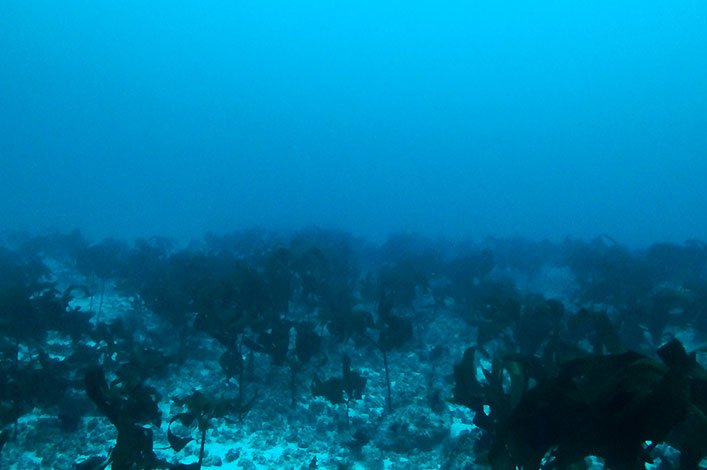
“It’s been fantastic be part of this pioneer research expedition, collecting invaluable information about these unknown deep sea ecosystems” he added “When we departed for this mission our running joke was we are off to discover new species in the Galapagos, and to our delight, may just have!” - Tom Glebas, who is VideoRay's vice president of product management, and head ROV pilot of our team.
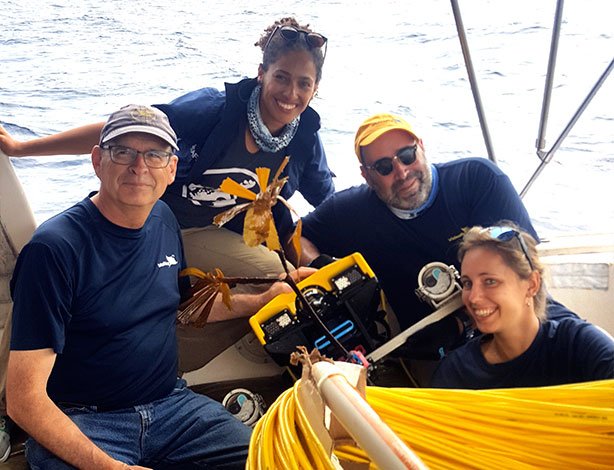
Following this discovery, myriad questions are running through my and my fellow scientists’ minds. How many more forests are out there in the reserve? What species is this? Is it new for the Galapagos? What’s the role of the seamounts for these ecosystems? What marine species does this kelp forest support? Stay tuned as we address some of these questions in blogs soon to come, especially after we finish preliminary analysis of the collected specimens.
Thrilled with all the video footage we have from the seamounts and the kelp samples, our task now is to analyze the videos transects to characterize the habitats of the Bajos and determine the kelp species found. Our findings so far show how little we currently know about seamount ecosystems and that there is probably a lot more to discover. It is evident that seamounts are of major ecological importance for the Galapagos Marine Reserve. It is therefore crucial that we continue researching these understudied spaces.
And lastly, I experienced the most amazing closure to my field season by meeting and talking to a living legend. Two weeks after the field work, while I was the guest speaker on a Lindblad Expeditions National Geographic liveaboard my “colleague” on the sister vessel was none other than Dr. Sylvia Earle. She had heard of my project and was keen to meet in person to learn more about the expedition and our findings. So I paid a call to Her Deepness. This was an incredible moment and privilege and reinforced my resolve and commitment to study and protect marine life for future generations and improve sustainable livelihoods on the basis of scientific understanding.
An ongoing blog for the mission can be found on National Geographic’s OpenExplorer.
We would like express our gratitude and appreciation for the generous grant awarded by the Lindblad Expeditions National Geographic (LEX-NG) Fund, without which this project would not have been possible.
